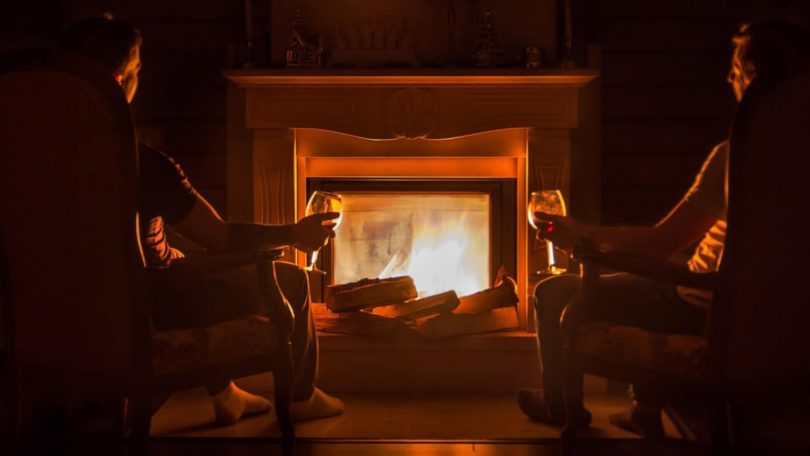Some people have complained about the increase in the value of the monthly gas bill, following the excise duty and the standardized receipt stamp.
But there are ways that help you to rationalize domestic gas consumption and also reduce your home gas bill by 15-30% and keep you warm during the winter.
Among these methods are the following:
Replace Old Single Glazed Windows With Double Glazed Ones
This costs an amount, but it will cut in half the energy lost through windows and compensate for its cost and save a lot of money in the long run.
You can save more than 70 percent of the energy lost.
Avoid Pumping Too Much Heat in the House to Keep It Warm
When coming home in the middle of a cold day or during the winter, some people to warm the house raise the temperature from 68 Fahrenheit to 78 Fahrenheit, to make the heating run at full power and warm up faster.
In such a case, the heating pumps heat to 68 degrees very quickly, but it consumes more fuel than the normal period, to reach this temperature and the result is a high fuel consumption.
It is illogical to raise the temperature to heat the house quickly, and the result is a high cost on the energy and electricity bill.
Do Not Close Vents in Unused Rooms
This is so as not to waste the heating energy used in heating the house and its rooms. Wasting energy without benefit makes the heating work efficiently due to changes in the air pressure in the system.
Experts recommend not closing more than 10% of the outlets and outlets in the house, and sealing the heating channels that must be closed helps to save energy further.
Use of a “Fireplace” Stove
The stove provides free access to energy by burning wood, while enjoying moments of romance and family warmth in front of the beautiful wood fire, but the increase in the energy bill can be predicted, when you open the stove or fireplace, its opening causes a flow of cold air and spreads it in the house, instead of air The warmth from the burning flames, which leads to re-igniting the heating and consuming more energy
Do Not Allow Heat to Escape From Your Home for a Long Time
When you air your home, open the windows for a few minutes. And if you leave a small opening all day, the energy needed to keep the house warm from the inside during the six cold months, the temperature outside 10 degrees Celsius or less, will emit about a ton of carbon dioxide.
Install good insulators at home, as they are one of the most effective ways to reduce carbon dioxide emissions and save energy in the long run.
Heat loss through walls, ceiling and floor generally constitutes more than 50 percent of the total heat loss in buildings.
Insulate the hot water tanks and central heating tubes, and secure aluminum foil behind the radiators.
Use Energy Efficient Lamps
A single economical lamp can reduce lighting costs by about $80, and avoid the emission of 400 kilograms of carbon dioxide during its lifetime.
Energy-saving bulbs may be more expensive, but they are cheaper in the long run because they last up to ten times longer than regular bulbs.
Heat Less Water
If you only boil enough water for the cup of tea you want to drink, you can contribute to saving a lot of energy.
If all people boil only their water, they will save a lot of unnecessary boiling water per day, and the energy they save can light a third of the street lamps.
Change Your Thermostat Setting
One of the easiest ways to reduce your electric bill is to adjust the thermostat.
According to the Department of Energy, you can save up to 10% on heating and cooling costs by adjusting your thermostat from 7 to 10 degrees 8 hours a day. In other words, make it warmer in the summer and a little cooler in the winter.
An easy way to do this is to adjust the thermostat when you are sleeping or away from home. If you have a smart thermostat, you can set your thermostat to set during these hours so you don’t forget.
Do Not Leave the Heater Candle Lit After Use
The 10-liter heater consumes 2 cubic meters of gas per hour, so it must be turned off when not needed and set to a lower level continuously.
Pay Attention to the Gas Meter to Ensure Its Safety
In anticipation of any malfunctions that lead to the exhaustion of gas and damage to the house, it is preferable to contact the company affiliated with it to replace it if necessary, and to read the gas bill before paying.
Lower the Kettle
There are some water heater manufacturers set thermostats to 140 degrees. But in fact, most families only need it at a maximum of 120 degrees.
This unnecessarily high setting can result in hundreds of dollars in losses. By adjusting the boiler temperature, you can limit these losses.
The thermostat knob on the water heater will likely be located near the bottom of the tank on the electric or gas control valve. Consult the user manual for instructions on how to modify it.
Change the Air Filters
Your air filter helps capture dirt, dust, pet hair, and more, preventing it from entering your HVAC system. If you don’t change air filters regularly enough, this debris will get into your HVAC system and get stuck, reducing efficiency.
According to the Department of Energy, replacing filters on time can reduce air conditioner energy consumption by 5% to 15%.
Not Maintaining a Constant Temperature
To save energy, leave the house at 68 degrees Fahrenheit, which is highly recommended, especially on winter days, even while sleeping or at work.
This step can miss a great deal of unused potential energy when not using a programmable thermostat and adjusting the house temperature during the night and during the day while working, as the energy is wasted in vain.
Although the effects of temperature control are based on climate and other factors, studies show that lowering the temperature by 10 degrees for eight hours a day can reduce your energy bill by 10-15%.










